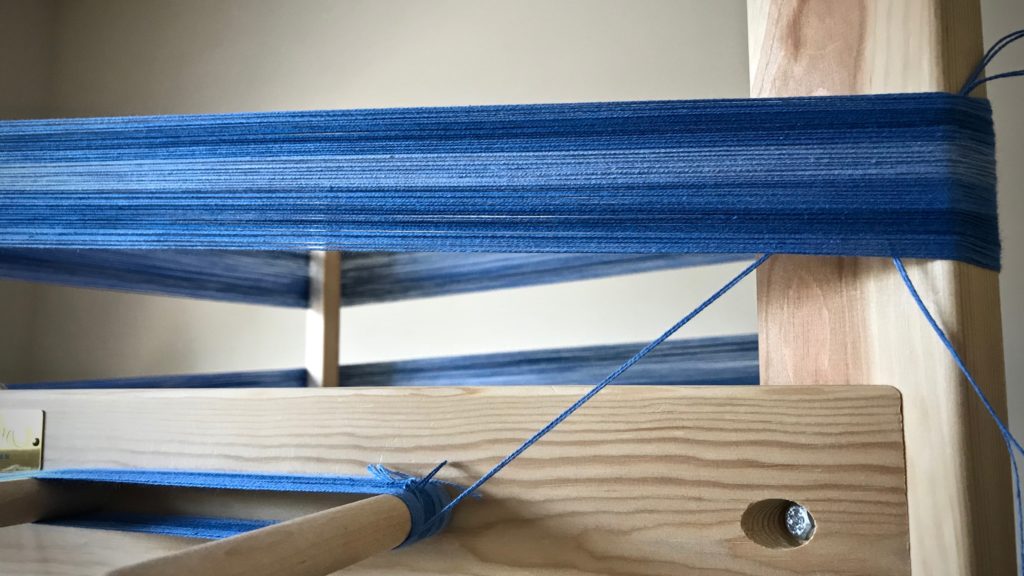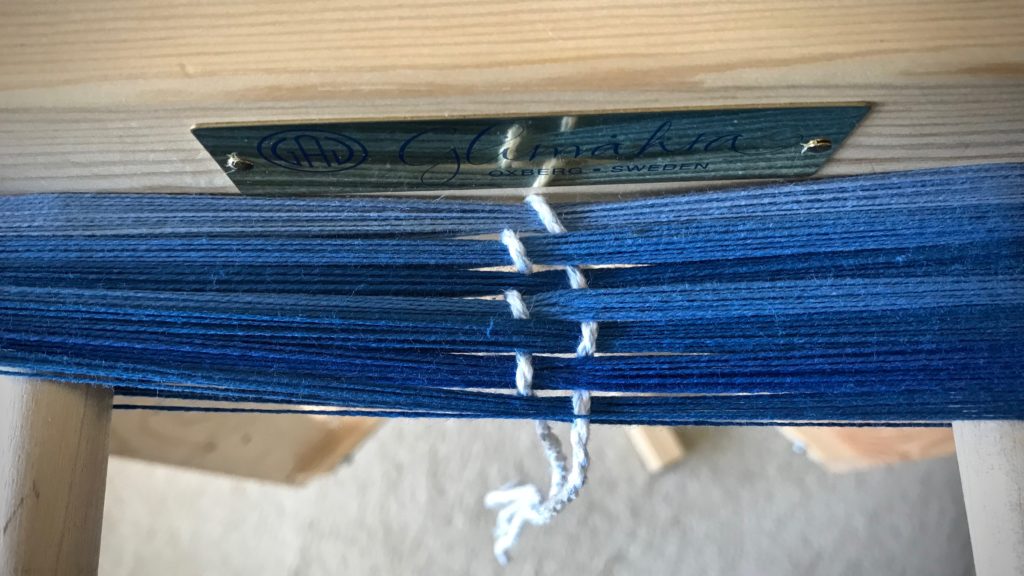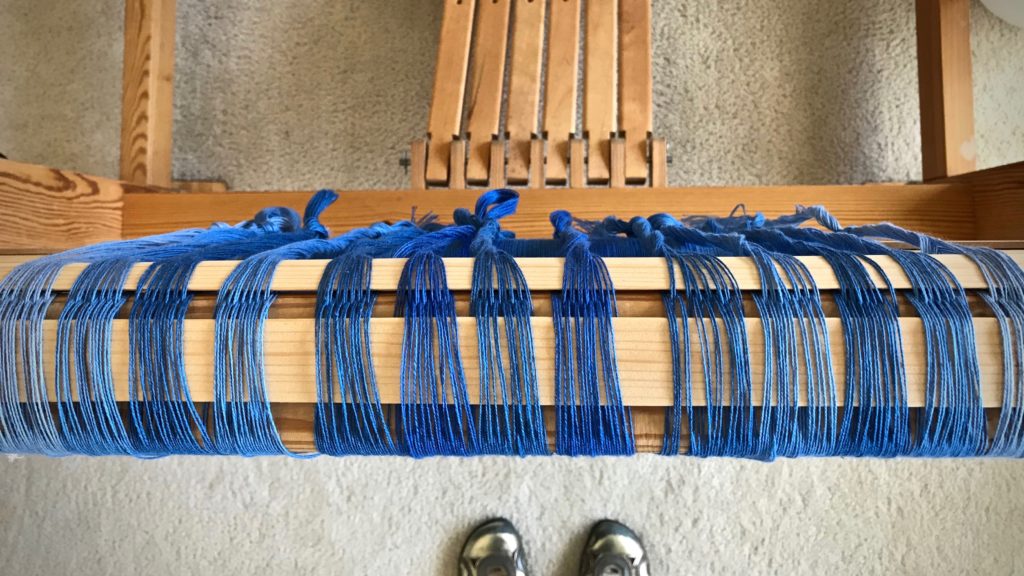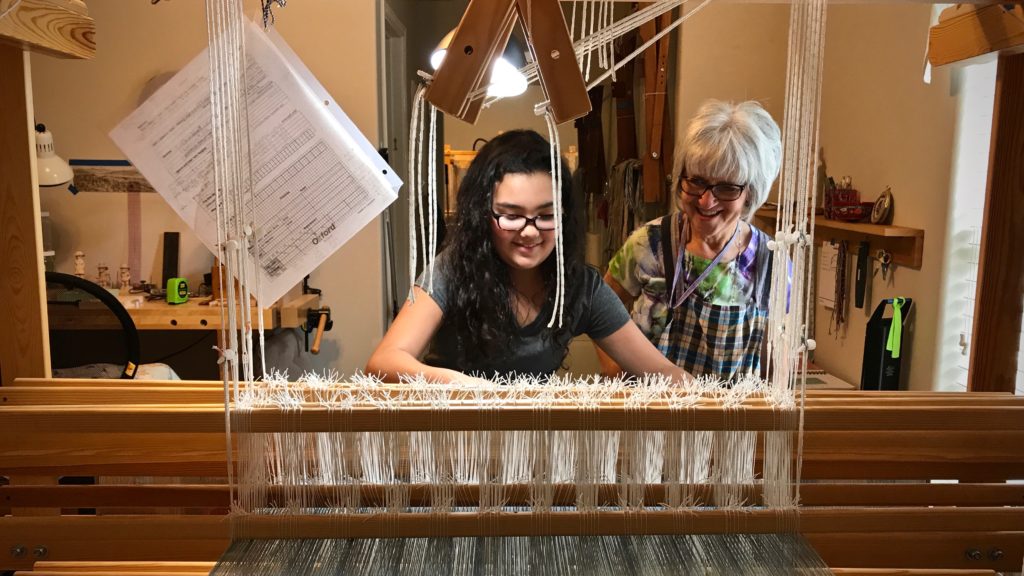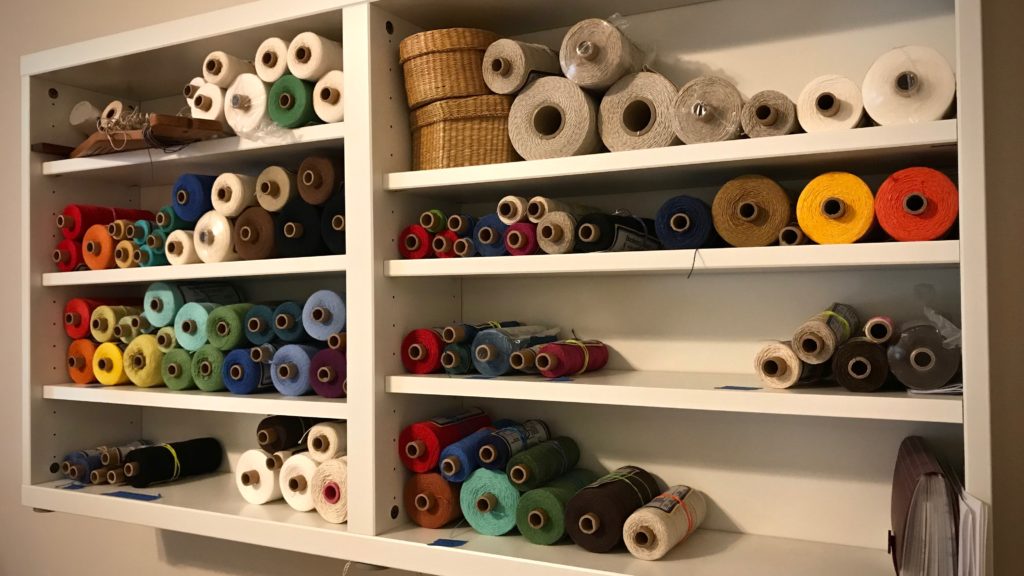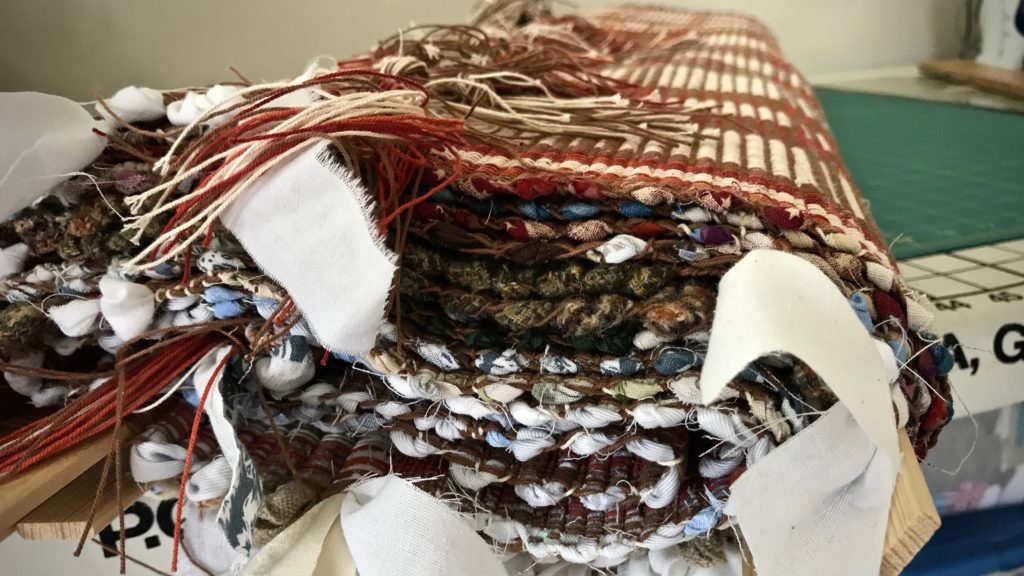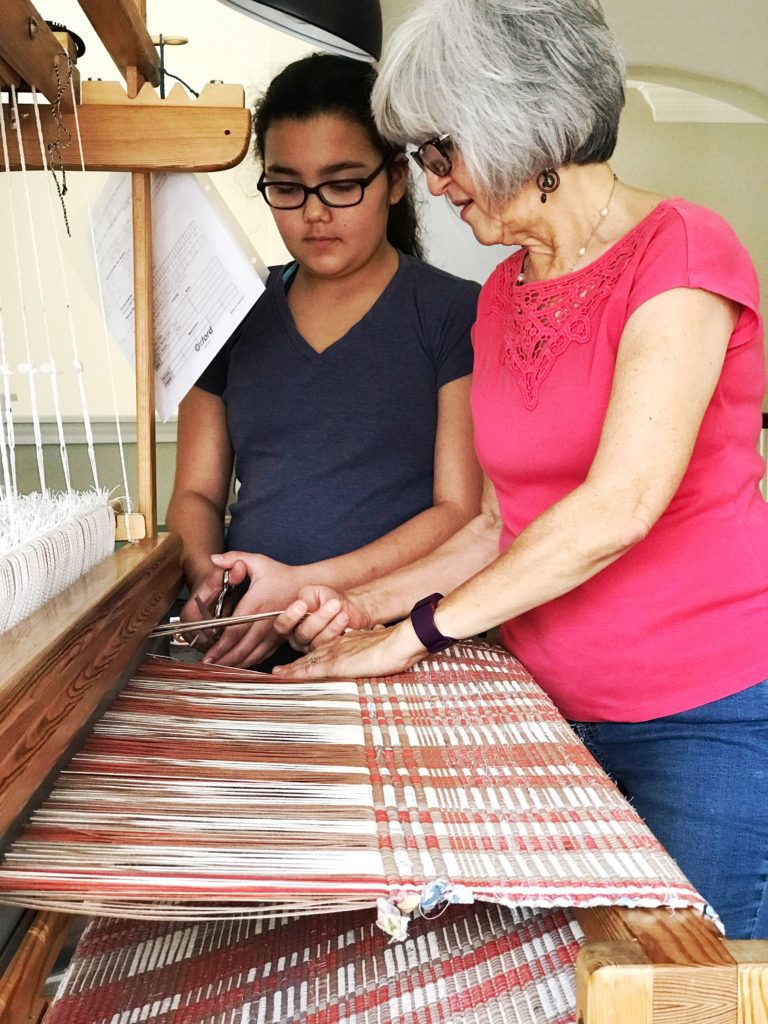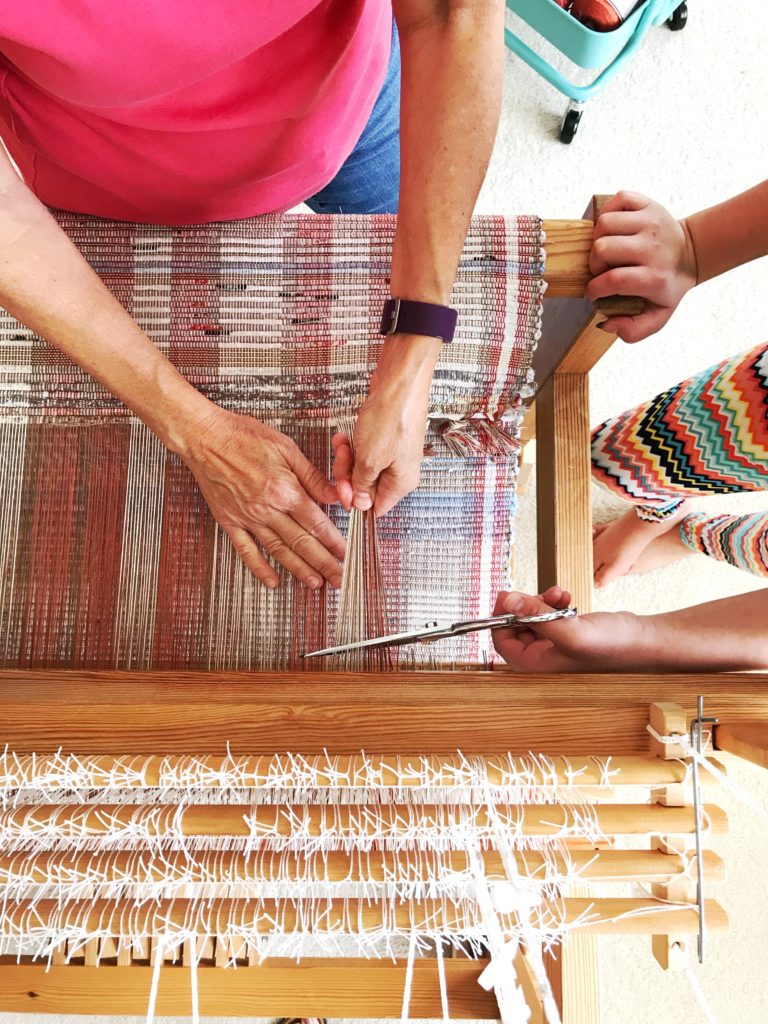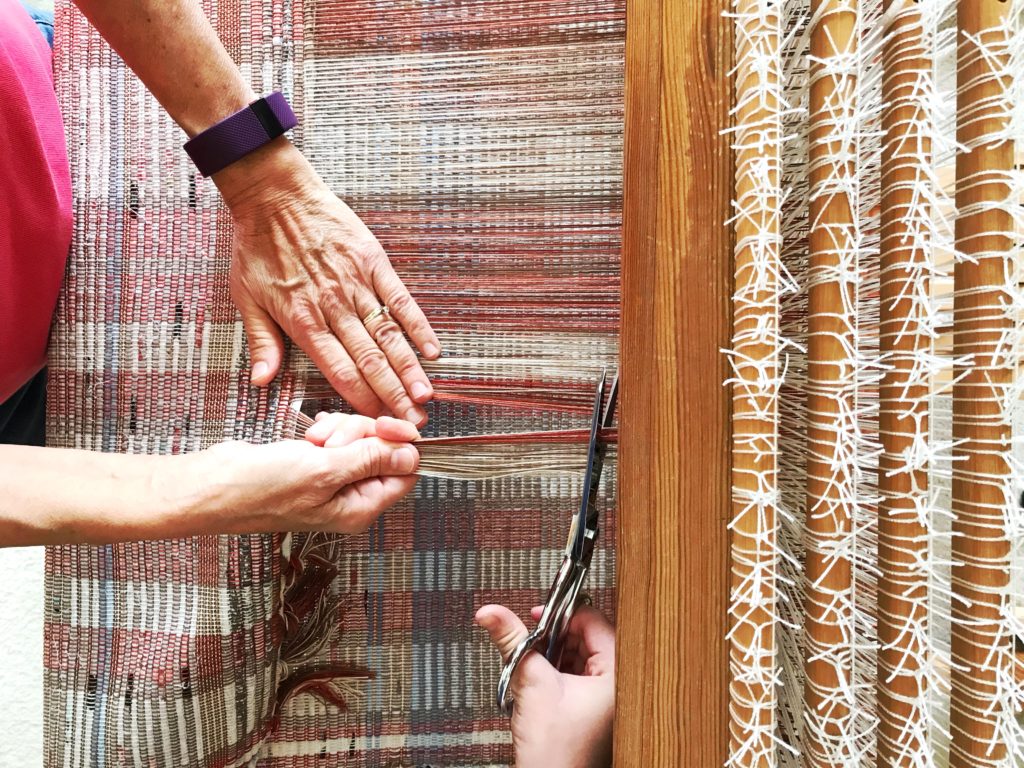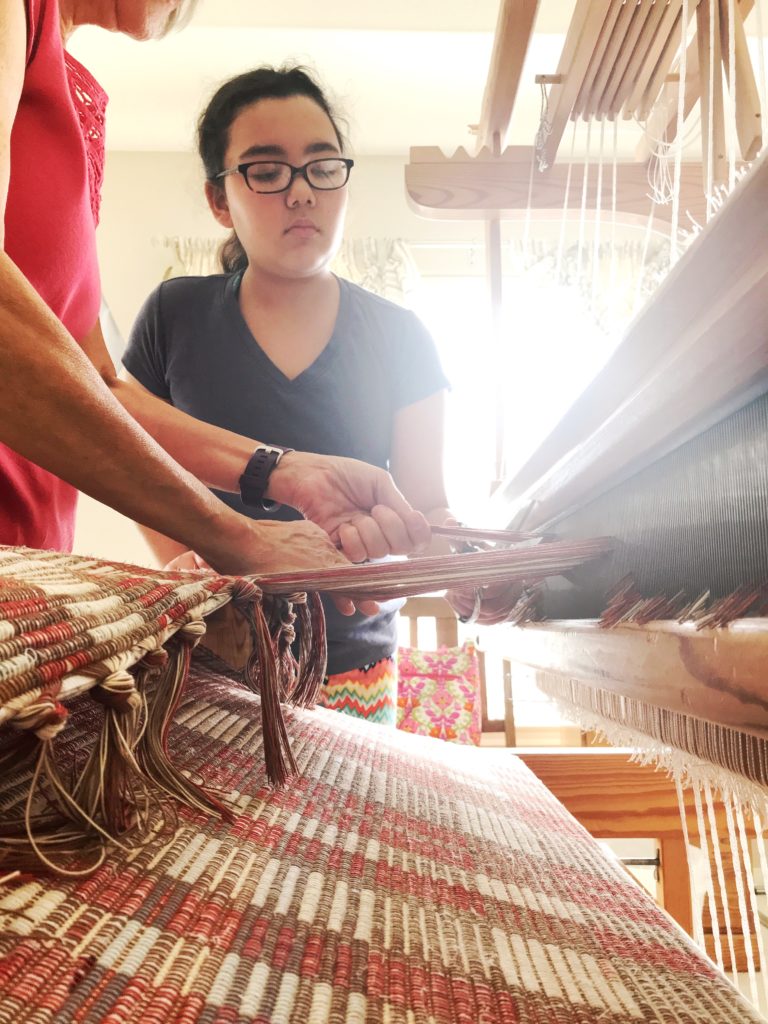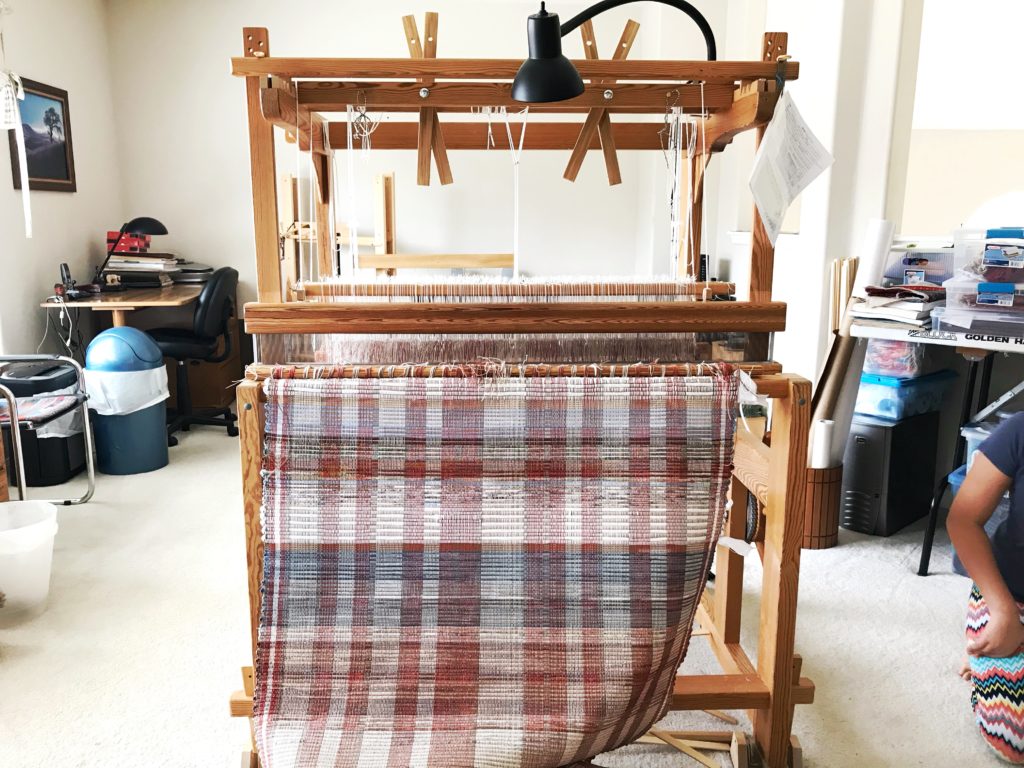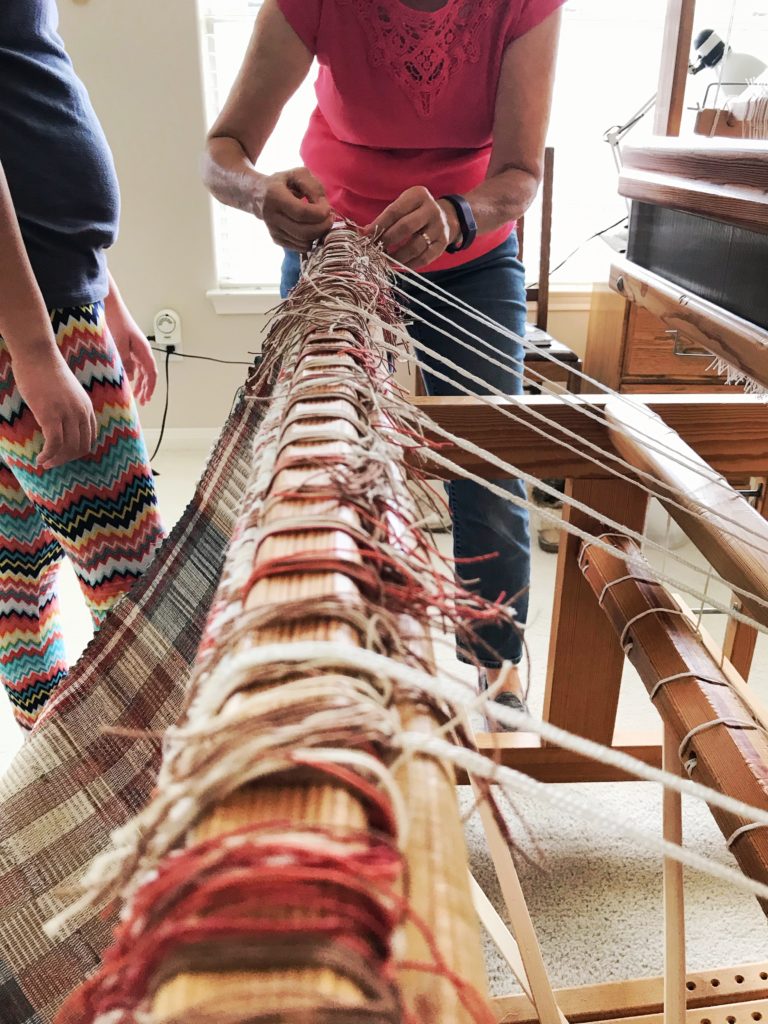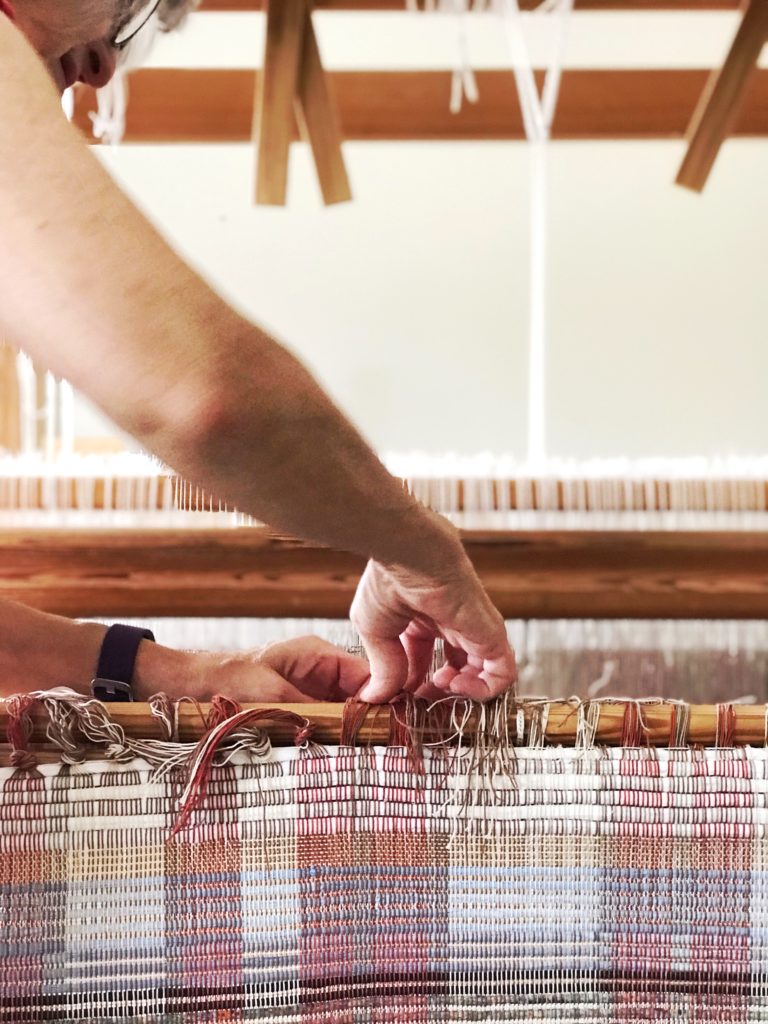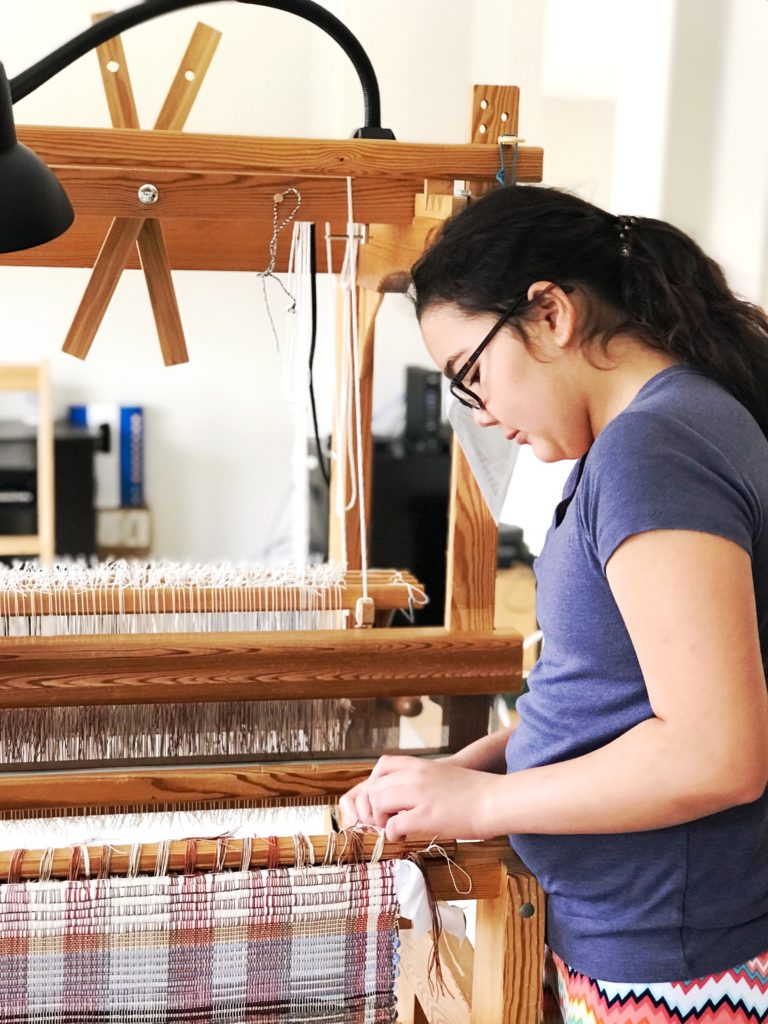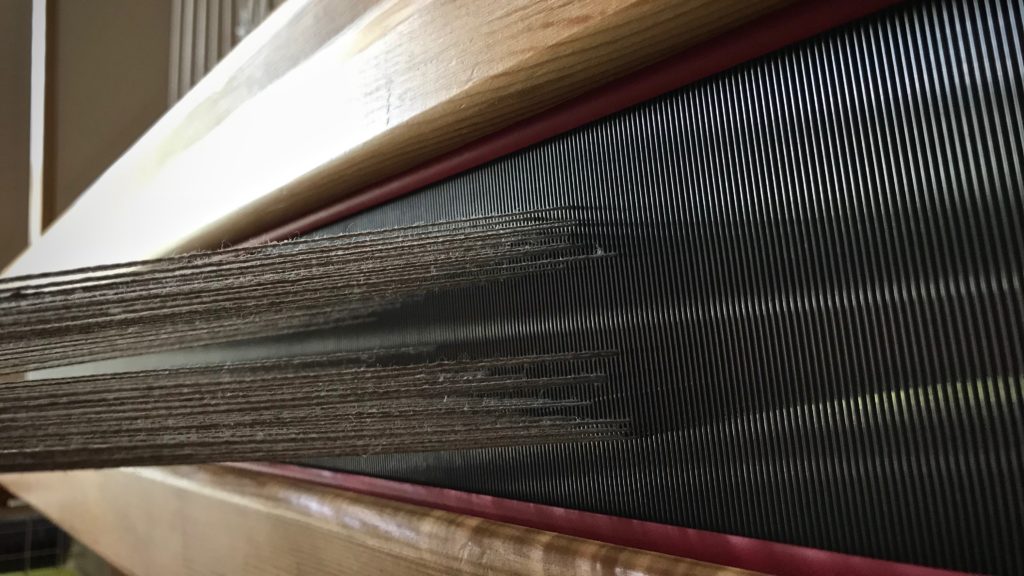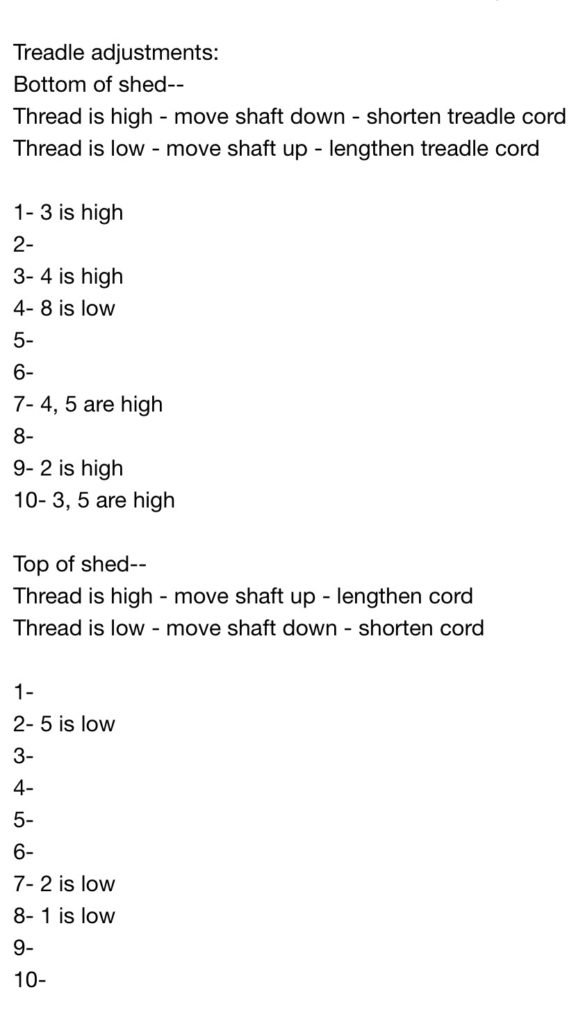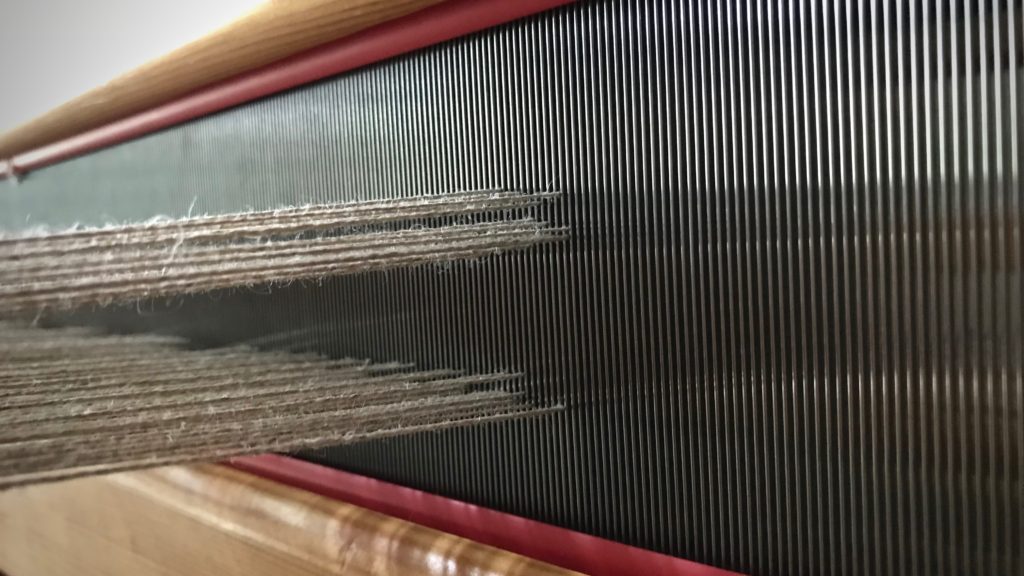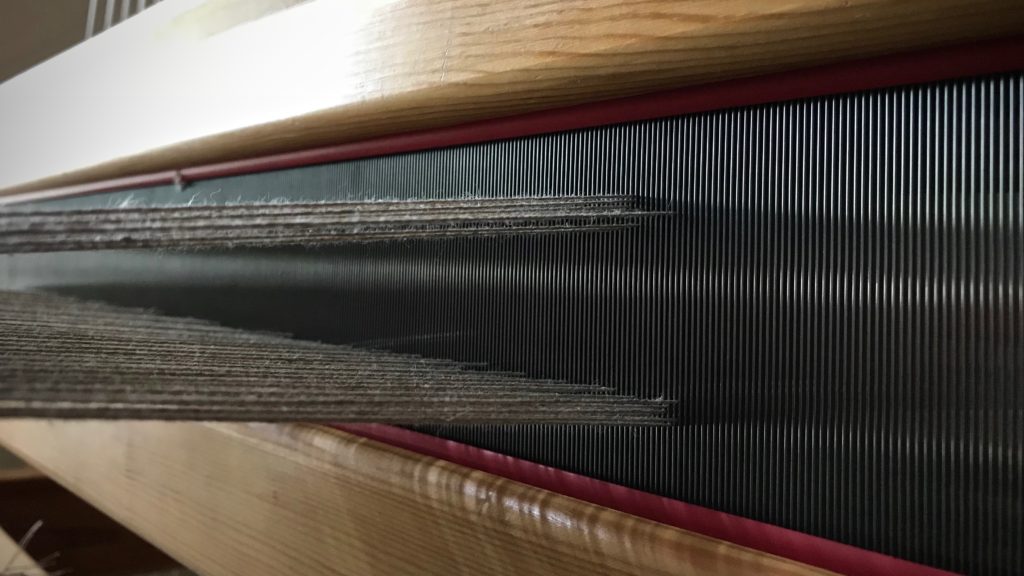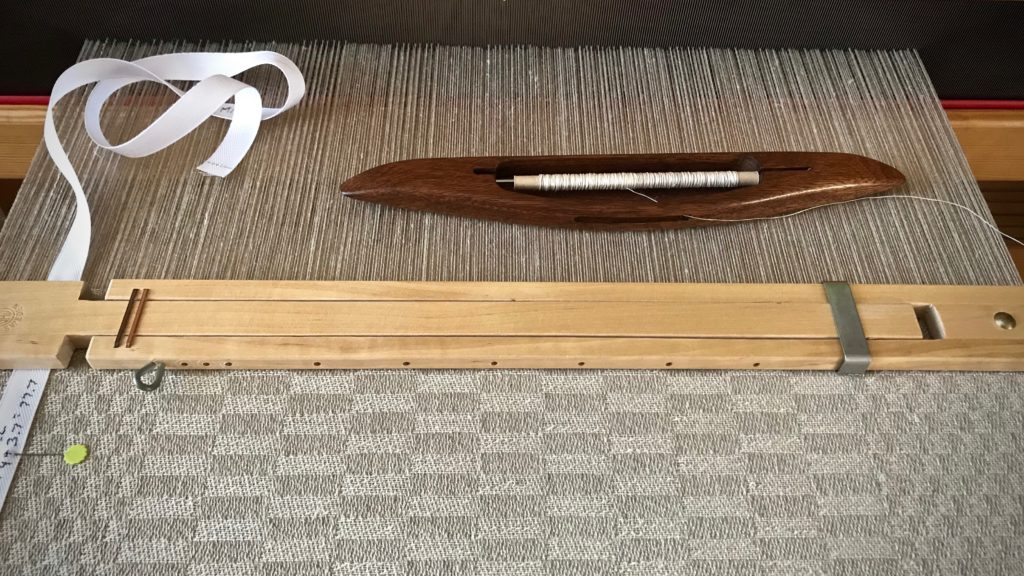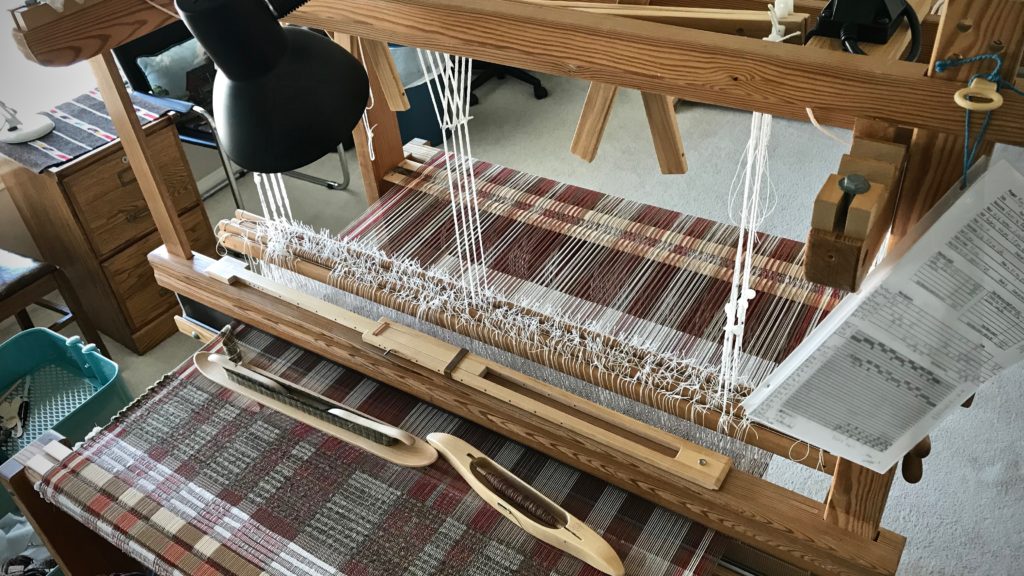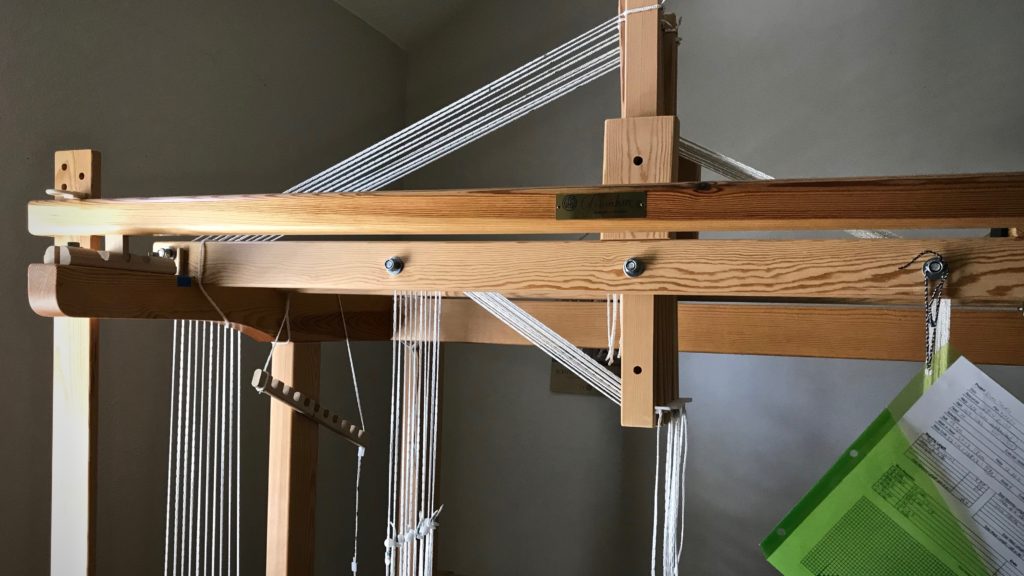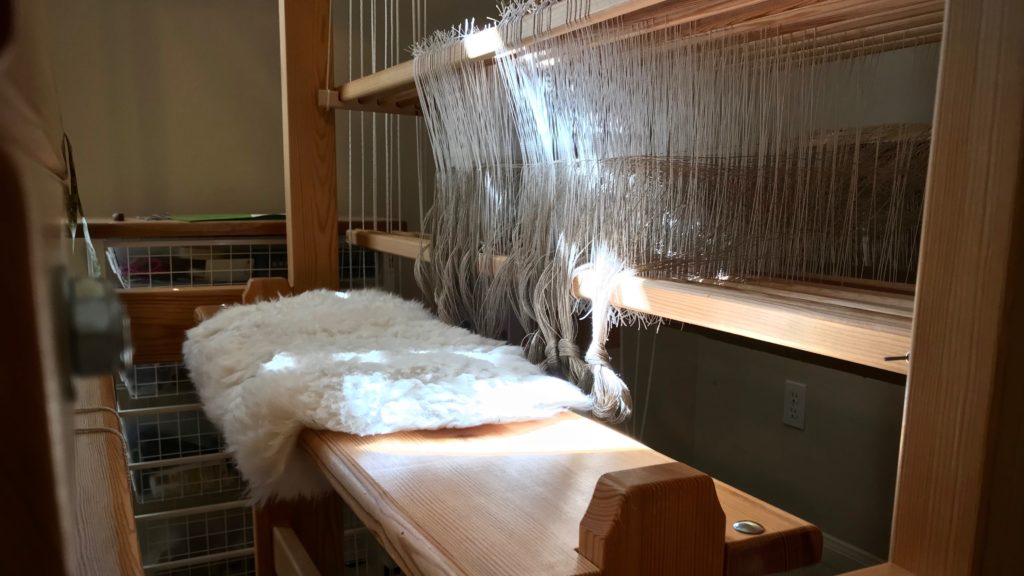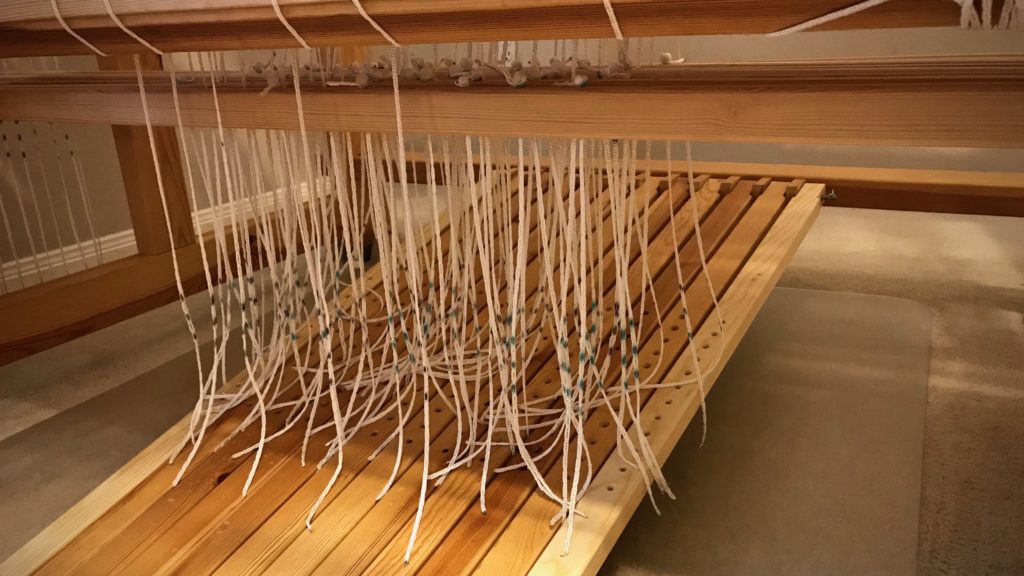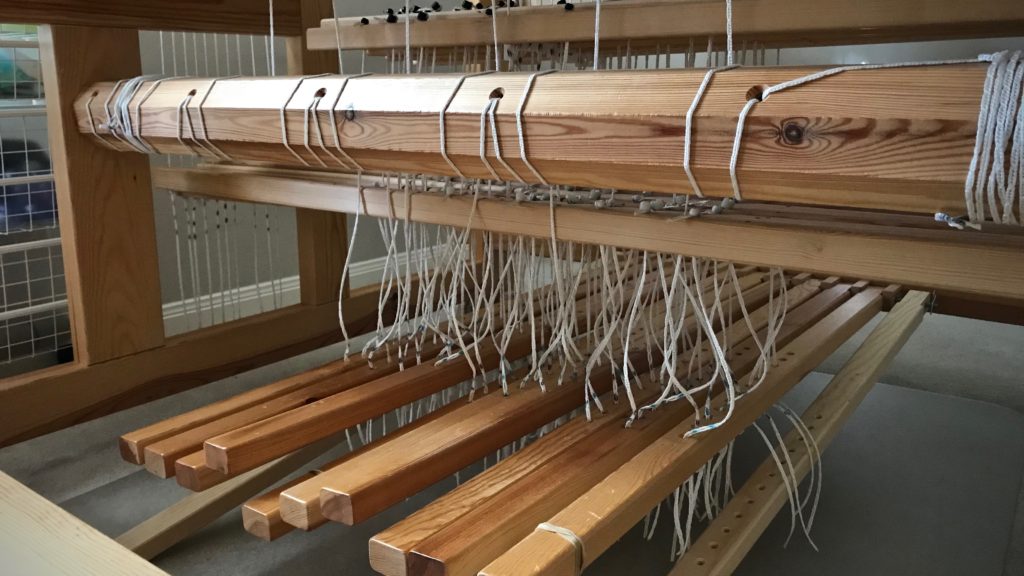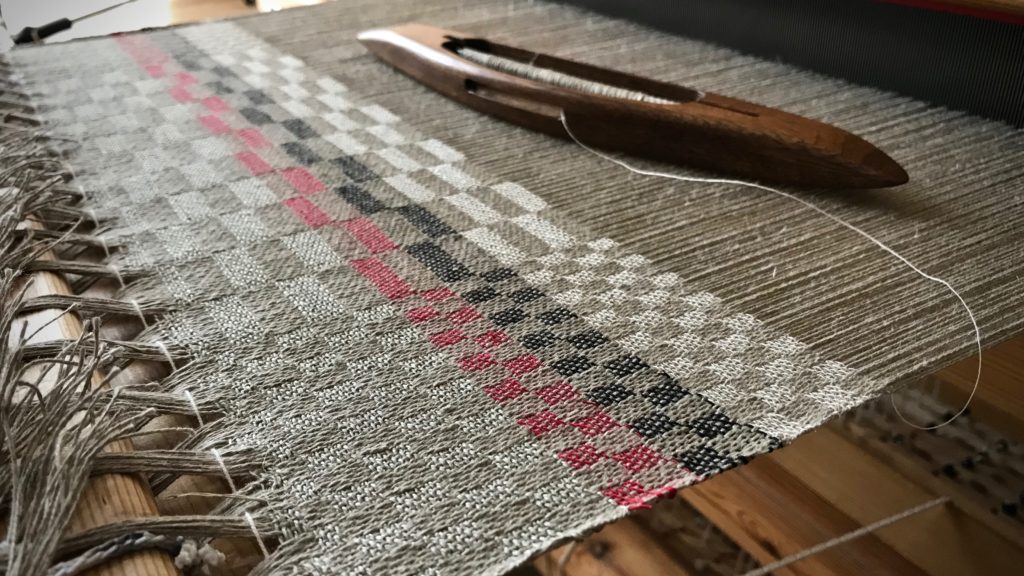The transformation of looms has begun! One by one, three empty looms are awakened from their rest. Two of three warps have been wound, and I have started dressing one of the looms. Soon, all three looms will be active as I weave coordinating textiles for our Texas hill country home.
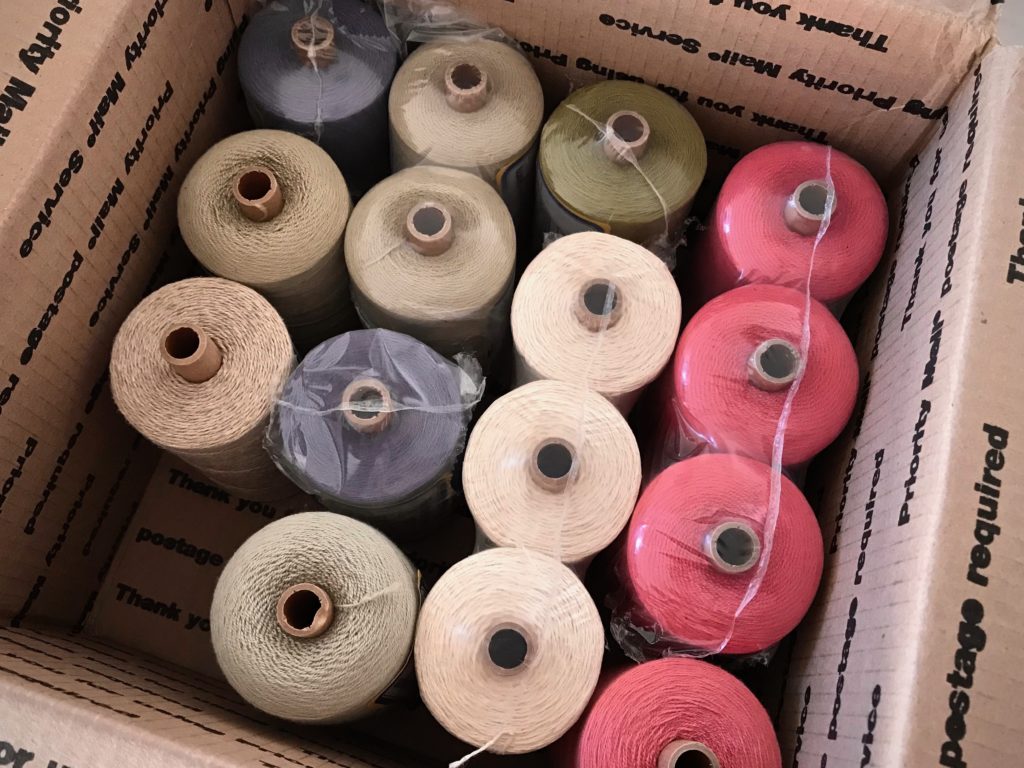
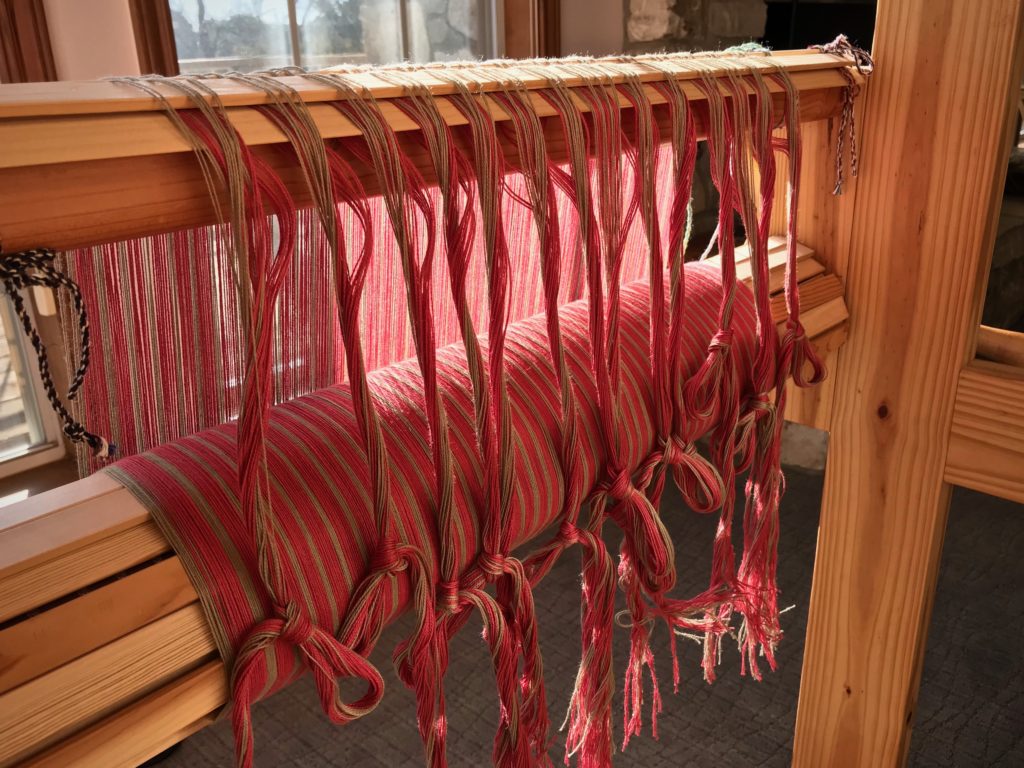
This loom at our hill country home has a warp designated for placemats. Color-and-weave effects will take the simple two-treadle plain weave up a notch, starting with the warp stripes. Is there anything as inviting as stripes on the warp beam? The loom that was bare now holds great promise.
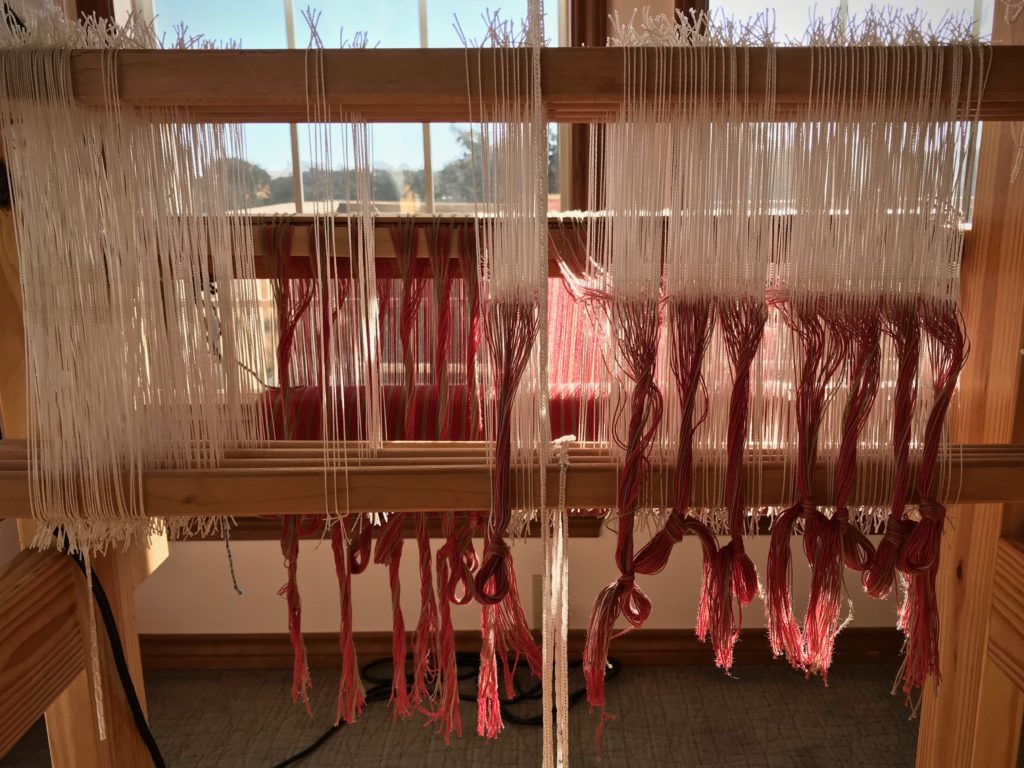
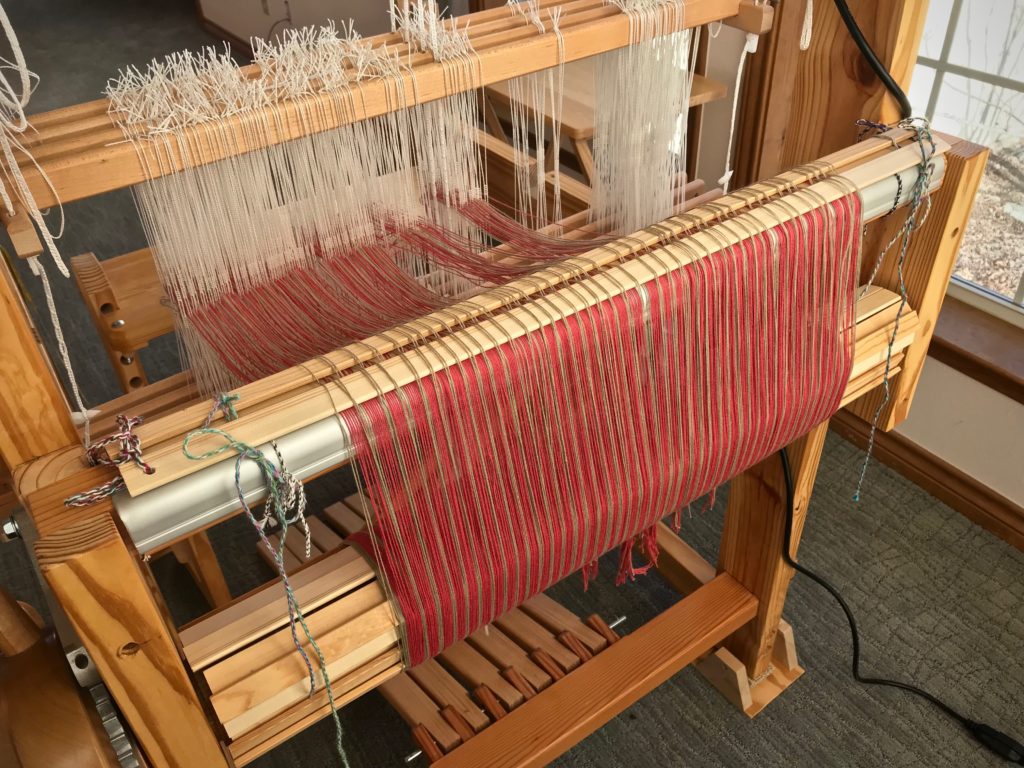
Love transforms people. Someone who feels empty is given purpose and hope when they are loved. A reason for being. A start toward something meaningful. Real love is extreme. Love is defined by the ultimate giving up of self-centered motives, as demonstrated by Jesus Christ. This is the extreme love that we have been given, and have been called to give. We’ve known the joy of stripes on the warp beam becoming handwoven fabric before our eyes. And we relish the thought of sharing that joy with someone else.
May you awaken empty looms.
Happy weaving,
Karen

